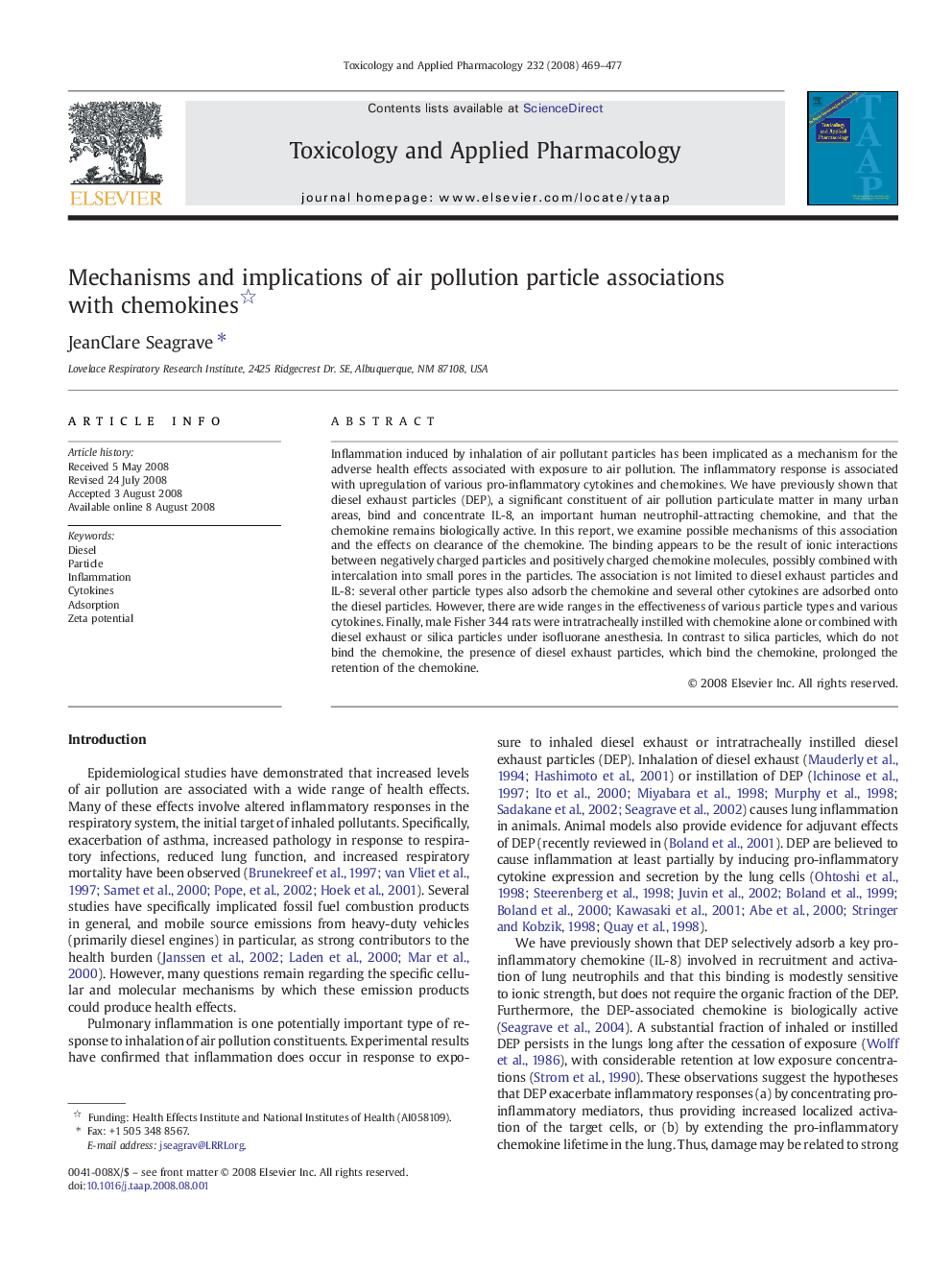| Article ID | Journal | Published Year | Pages | File Type |
|---|---|---|---|---|
| 2571054 | Toxicology and Applied Pharmacology | 2008 | 9 Pages |
Inflammation induced by inhalation of air pollutant particles has been implicated as a mechanism for the adverse health effects associated with exposure to air pollution. The inflammatory response is associated with upregulation of various pro-inflammatory cytokines and chemokines. We have previously shown that diesel exhaust particles (DEP), a significant constituent of air pollution particulate matter in many urban areas, bind and concentrate IL-8, an important human neutrophil-attracting chemokine, and that the chemokine remains biologically active. In this report, we examine possible mechanisms of this association and the effects on clearance of the chemokine. The binding appears to be the result of ionic interactions between negatively charged particles and positively charged chemokine molecules, possibly combined with intercalation into small pores in the particles. The association is not limited to diesel exhaust particles and IL-8: several other particle types also adsorb the chemokine and several other cytokines are adsorbed onto the diesel particles. However, there are wide ranges in the effectiveness of various particle types and various cytokines. Finally, male Fisher 344 rats were intratracheally instilled with chemokine alone or combined with diesel exhaust or silica particles under isofluorane anesthesia. In contrast to silica particles, which do not bind the chemokine, the presence of diesel exhaust particles, which bind the chemokine, prolonged the retention of the chemokine.
